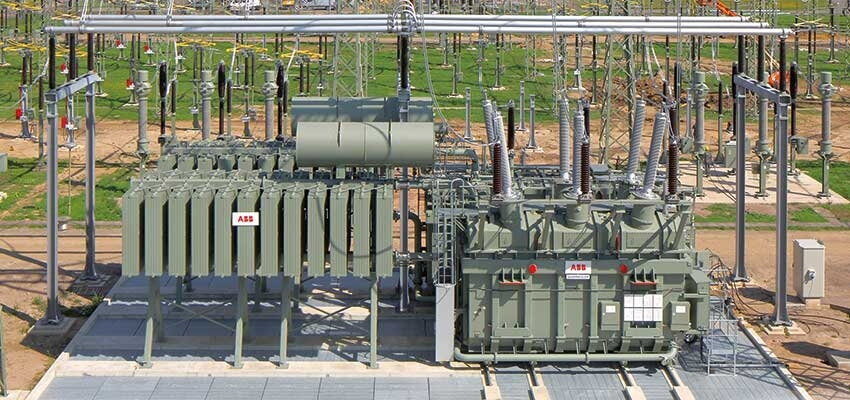
Classification of Transformers Family
Transformers basically perform a very simple function: they increase or decrease voltage and current for electric energy transmission. It is precisely stated what a transformer...
byJean Sanchez, Mladen Banovic

Transformers basically perform a very simple function: they increase or decrease voltage and current for electric energy transmission. It is precisely stated what a transformer is in the International Electrotechnical Vocabulary, Chapter 421: Power transformers and reactors [1]:
“A static piece of apparatus with two or more windings which, by electromagnetic induction, transforms a system of alternating voltage and current into another system of voltage and current usually of different values and at the same frequency for the purpose of transmitting electrical power.“
The focus of this article is on the transformers which enable transmission of energy in the electrical grid, while all other types, such as the instrument transformers (i.e. voltage and current transformers) and the audio transformers, etc., are excluded. The aim is to provide an overview of different types of transformers in as systematic way as possible, rather than elaborating on each type.
The most important international organisations with focus on such transformers are IEC through E14, its technical committee for the world standards; IEEE through the Transformers Committee mainly for the American standards and CIGRE through the Study Committee A2 Transformers which mainly produces technical brochures and guidelines on many subjects. Main standards for the transformers in question are the IEC 60076 [2] and the IEEE C57 [3] series.
Classification of transformers family
As mentioned above, transformers perform a very simple function and they can have many applications. Transformers are used in every power plant, all grid substations, buildings, in the industry, the underground installations, wind turbines, on platforms, marine vessels, under the sea, etc. Due to peculiarities of all these applications, many different types of transformers have been developed in the course of history. To simplify the overview of many transformer types, it is useful to have some kind of systematic classification. However, this is not easy to do because there are many ways of doing it. The transformer types could be classified according to their power rating, voltage, current, weight, type of cooling etc., but such approach would have a limited applicability.
Probably the simplest and the clearest transformer classification is according to the number of phases in:
– single-phase transformers
– three-phase transformers
In a three-phase system, the single-phase units are used in a bank of three transformers linked together. A single three-phase transformer costs approximately 15% less and occupies less space than one unit of three single-phase transformers within the same tank. However, due to limitations during the manufacturing and mainly transportation, particularly of large units, the transformers sometimes must be produced as single-phase transformers. Another reason for using a single-phase unit rather than a three-phase unit, is the possibility of having a fourth identical unit as a spare. Despite its simplicity and clarity, this type of classification does not overly help in classification of the whole transformers family.
Classification according to basic technology of a transformer design and manufacturing is also often used. There are two main technologies for designing and manufacturing the transformers:
– core type
– shell type
In a shell-formed transformer, the primary and secondary windings are quite “flat” and are positioned on one leg surrounded by the core. In a core-formed transformer, cylindrical windings are like “coils” and cover the core legs. However, this classification is also limited in the large portfolio of either of those two transformer types.
Transformers can be classified according to the insulating/cooling fluid in:
– liquid-filled transformers
– gas-filled transformers (mainly with SF6)
– dry-type transformers
As the dry-type, and particularly gas-filled/insulated transformers have limited applications in a large power system, this classification is also not perfect.
Despite not being a perfect one, perhaps the most practical classification used by the industry is the one according to the transformer application. According to this approach, transformers can be roughly classified as:
– power transformers
– distribution transformers
– reactors
This classification could, however, raise some questions. There are no obvious technical reasons for classifying a transformer as a distribution transformer rather than a power transformer but it is widely used in practice, and it is helpful. The term “distribution transformer” is somewhat used in the IEC 60076, while it is commonly used in IEEE C57. Some companies define distribution transformers as the power transformers below 10 MVA. The 2.5 or 5 MVA limits are also used elsewhere instead of 10 MVA.
The classification above is even more dubious with regards to reactors, because they are not transformers at all but are usually grouped with transformers because they share most of the technology with power transformers and they are designed and produced in the transformer factories. It took me some time at the beginning of my carrier to distinguish a reactor from a transformer and I believe that others had a similar experience.
The classification by application will be used in this article.







